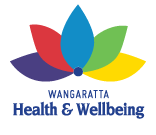Acupuncture and Dry Needling
Are your pain killers making you obese?
October 1, 2019Acupuncture and Dry Needling
The aim of this post is to provide some education about Acupuncture and Dry Needling, so you can make an informed decision about which treatment you choose to receive.
Both Acupuncture and Dry Needling involve puncturing the skin for therapeutic purposes with thin needles however, things differ from here. Acupuncture works on Meridians and specific Acupuncture points with the aim of moving Qi(pronounced chi) or energy that may results in self-regulatory processes affecting various pathways within the body(1), whilst dry needling is used to attempt to release tension from tight muscle and knots by stimulating trigger points within the muscles.(2)
Strict guidelines are in place for acupuncturists within Australia and researchers have studied acupuncture as a complementary treatment for many conditions however, dry needling is a newer practice, and the evidence is less comprehensive. In Australia dry needling is NOT REGULATED and as such the onus is on the patient having the treatment to ensure that the person performing the treatment is reputable. Please do your due diligence when choosing your health care practitioners.
Research suggests there is strong evidence that acupuncture is effective in treating:
– Allergic rhinitis (perennial & seasonal)
– Chemotherapy-induced nausea and vomiting (with
anti-emetics)
– Chronic low back pain
– Headache (tension-type and chronic)
– Knee osteoarthritis
– Migraine prophylaxis
- Postoperative nausea & vomiting
- Postoperative pain
(3)
As well as moderate evidence supporting the effectiveness of acupuncture in treating:
– Acute low back pain
– Acute stroke
– Ambulatory anaesthesia
– Anxiety
– Aromatase-inhibitor-induced arthralgia
– Asthma in adults
– Back or pelvic pain during pregnancy
– Cancer pain
– Cancer-related fatigue
– Constipation
– Craniotomy anaesthesia
– Depression (with antidepressants)
– Dry eye
– Hypertension (with medication)
– Insomnia
– Irritable bowel syndrome
– Labour pain
– Lateral elbow pain
– Menopausal hot flushes
- Modulating sensory perception thresholds
- Neck pain
– Obesity
- Perimenopausal & postmenopausal insomnia
- Plantar heel pain
– Post-stroke insomnia
– Post-stroke shoulder pain
– Post-stroke spasticity
– Post-traumatic stress disorder
– Prostatitis pain/chronic pelvic pain syndrome – Recovery after colorectal cancer resection
– Restless leg syndrome
– Schizophrenia (with antipsychotics)
– Sciatica
– Shoulder impingement syndrome (early stage) (with exercise)
– Shoulder pain
- Smoking cessation (up to 3 months)
- Stroke rehabilitation
- Temporomandibular pain
(3)
With all that being said acupuncture can be very safe and effective when performed by a registered acupuncturist like myself as can dry needling for musculoskeletal conditions. If your going to have dry needling is there anyone better than a registered acupuncturist to do that dry needling?
I hope you have found this useful, and I trust that you have the useful information to make smart and safe decisions when choosing your acupuncturist.
Damien Bakker.
Wangaratta Health and Wellbeing.
Suit 1 level1 90-100 Ovens St
Wangaratta Vic 3677
(03) 5721 4162
info@wangarattahealthwellbeing.com.au
1 Moffet,H.H. (2006) How might acupuncture work? A systematic review. BMC Complementary and alternative medicine. Issue 6. Article number 25. Retrieved from https://bmccomplementalternmed.biomedcentral.com/articles/10.1186/1472-6882-6-25
2 Dunning, J., Butts, R., Mourad, F., Young, I., Flannagan, S., & Perreault, T. (2014, August). Dry needling: A literature review with implications for clinical practice guidelines. Physical Therapy Reviews, 19(4), 252–265. Retrieved from https://www.ncbi.nlm.nih.gov/pmc/articles/PMC4117383/
3 McDonald J, Janz S. The Acupuncture Evidence Project: A Comparative Literature Review (Revised Edition). Brisbane: Australian Acupuncture and Chinese Medicine Association Ltd; 2017. http://www.acupuncture.org.au/
